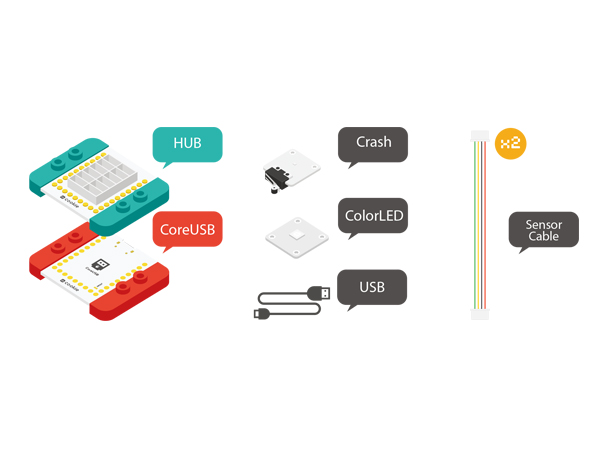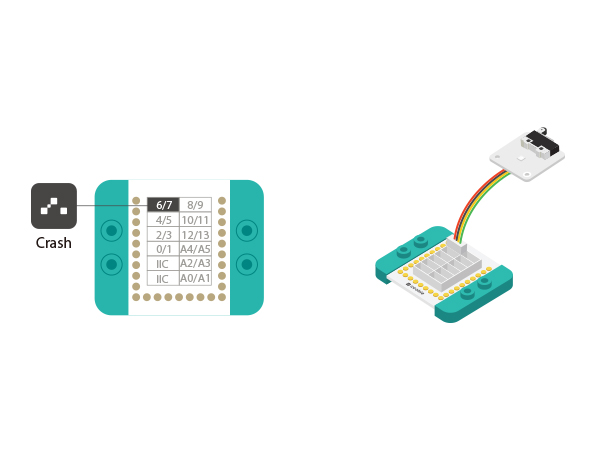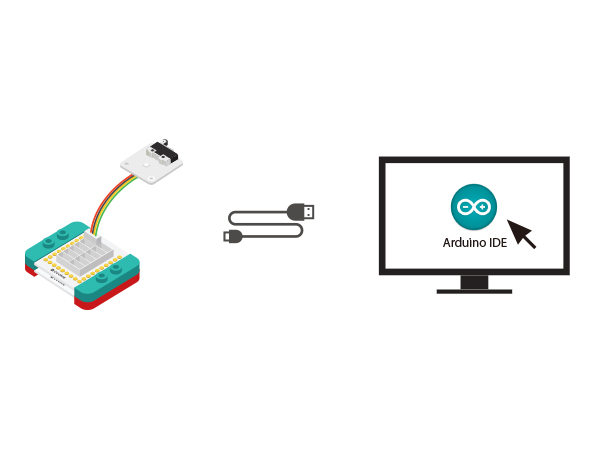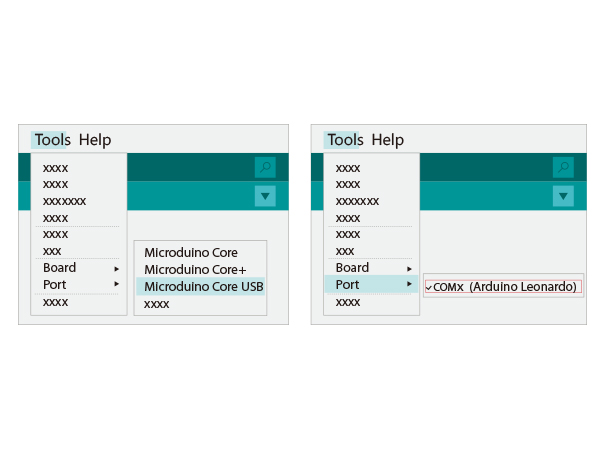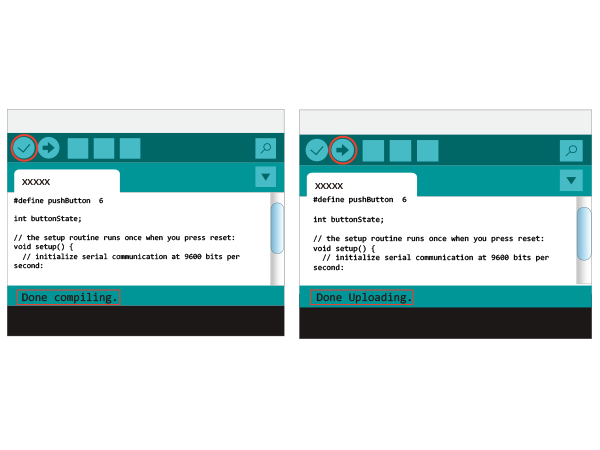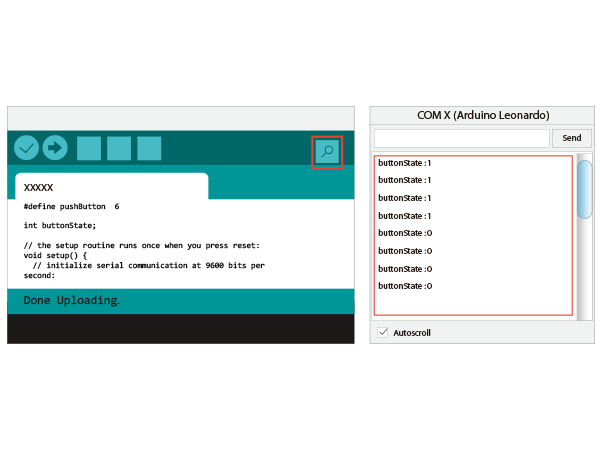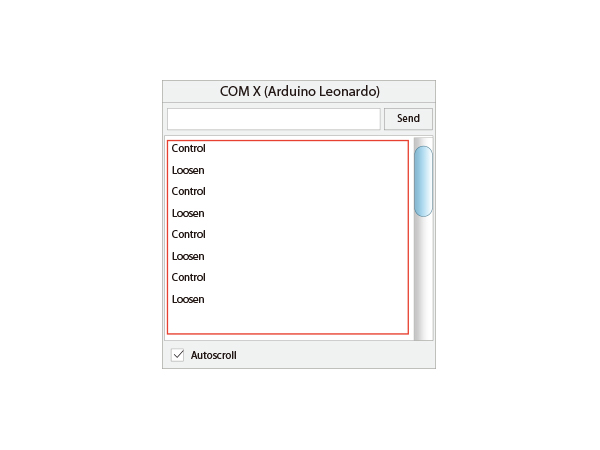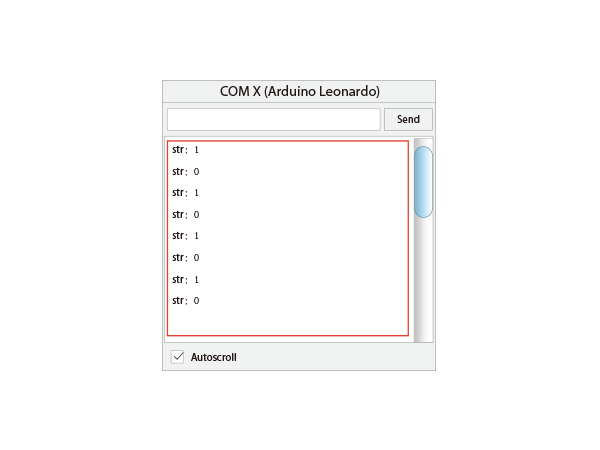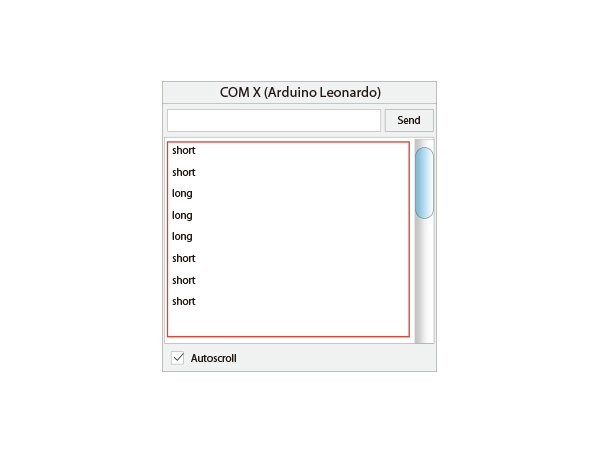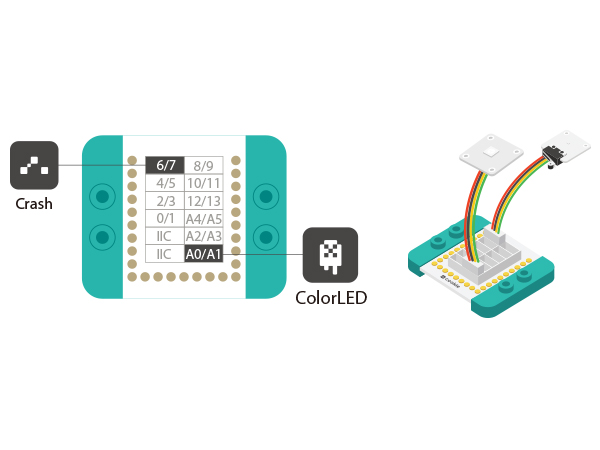The Use of Crash Sensor
Contents[hide]OutlineIt is used for detecting collision. Therefore it can also be called collision signal sensor. Due to different collision direction, we can divide Microduino-Crash into left-Crash and right-Crash.
Specification
DevelopmentEquipment
Preparation
DebuggingExperiment One: Key Detection
#define pushButton 6
int buttonState;
// the setup routine runs once when you press reset:
void setup() {
// initialize serial communication at 9600 bits per second:
Serial.begin(9600);
// make the pushbutton's pin an input:
pinMode(pushButton, INPUT);
}
// the loop routine runs over and over again forever:
void loop() {
// read the input pin:
buttonState = digitalRead(pushButton);//Read the input value of the Crash.
// print out the state of the button:
Serial.print("buttonState:");
Serial.println(buttonState); //Print the value in the serial port.
delay(100); // 100ms time delay
}
*Adopt " digitalRead(XX " to read the key signal, which is digital with the status of "0" or "1". Experiment Two: Press down or Release the Key
#define pushButton 6 //Define the control pin of the key.
int buttonState, num;
// the setup routine runs once when you press reset:
void setup() {
// initialize serial communication at 9600 bits per second:
Serial.begin(9600);
// make the pushbutton's pin an input:
pinMode(pushButton, INPUT);
}
// the loop routine runs over and over again forever:
void loop() {
// read the input pin:
buttonState = digitalRead(pushButton);//Read the input value of the Crash.
// print out the state of the button:
//Print the value when pressing down or releasing the key.
if (num != buttonState)
{
num = buttonState;
if (num == 1)
Serial.println("Loosen");//Release
else
Serial.println("Control");//Press down
delay(100); // 100ms time delay
}
}
Experiment Three: Pressing status change
#define pushButton 6
int buttonState;
boolean str;
// the setup routine runs once when you press reset:
void setup() {
// initialize serial communication at 9600 bits per second:
Serial.begin(9600);//Serial communication baud rate
// make the pushbutton's pin an input:
pinMode(pushButton, INPUT);
}
// the loop routine runs over and over again forever:
void loop() {
// read the input pin:
buttonState = digitalRead(pushButton);//Read the input value of the Crash.
if (!buttonState)
{
delay(300);
str = !str;
Serial.print("str:");
Serial.println(str);
}
}
Press once, the "str" value is True(1) or twice, the value is False(1). Experiment Four: Short pressing & Long pressing function
#define pushButton 6
int buttonState, num;
unsigned long button_time_cache = 0;
unsigned long button_time = 0;
boolean button_sta = false;
void setup() {
// initialize serial communication at 9600 bits per second:
Serial.begin(9600);
// make the pushbutton's pin an input:
pinMode(pushButton, INPUT);
}
void loop() {
// read the input pin:
buttonState = digitalRead(pushButton);// Read the input value of the Crash.
if (buttonState == 0)
{
delay(100);
if (digitalRead(pushButton) == 1 && !button_sta)//Loosen the key and do not enter long pressing, meaning short pressing.
{
Serial.println("short");
}
else if (millis() - button_time_cache > 1500) //The pressing time is longer than 1.5s, meaning long pressing.
{
button_sta = true;
button_time_cache = millis();
Serial.println("long");
}
}
else if (buttonState == 1)
{
button_time_cache = millis();
button_sta = false;
}
}
Experiment Five: Colored Light Control
#define PIN_LED A0
#define PIN_key 6
boolean status=false;
#include <Adafruit_NeoPixel.h>
Adafruit_NeoPixel strip = Adafruit_NeoPixel(6, PIN_LED, NEO_GRB + NEO_KHZ800);
void setup()
{
pinMode(PIN_key, INPUT);
pinMode(PIN_LED, OUTPUT);
strip.begin(); // Initialize the LED
strip.show(); // Initialize all pixels to 'off'
}
// the loop function runs over and over again forever
void loop()
{
if(!digitalRead(PIN_key))
{
delay(100);
if(!digitalRead(PIN_key))
{
status=!status;
}
}
if(status)
{
colorWipe(strip.Color(0, 0, 0), 10); //Close the light
}
else
{
colorWipe(strip.Color(255, 0, 0), 10); //Blue
}
}
// Fill the dots one after the other with a color
void colorWipe(uint32_t c, uint8_t wait)
{
for(uint16_t i=0; i<strip.numPixels(); i++)
{
strip.setPixelColor(i, c);
strip.show();
delay(wait);
}
}
Video |
